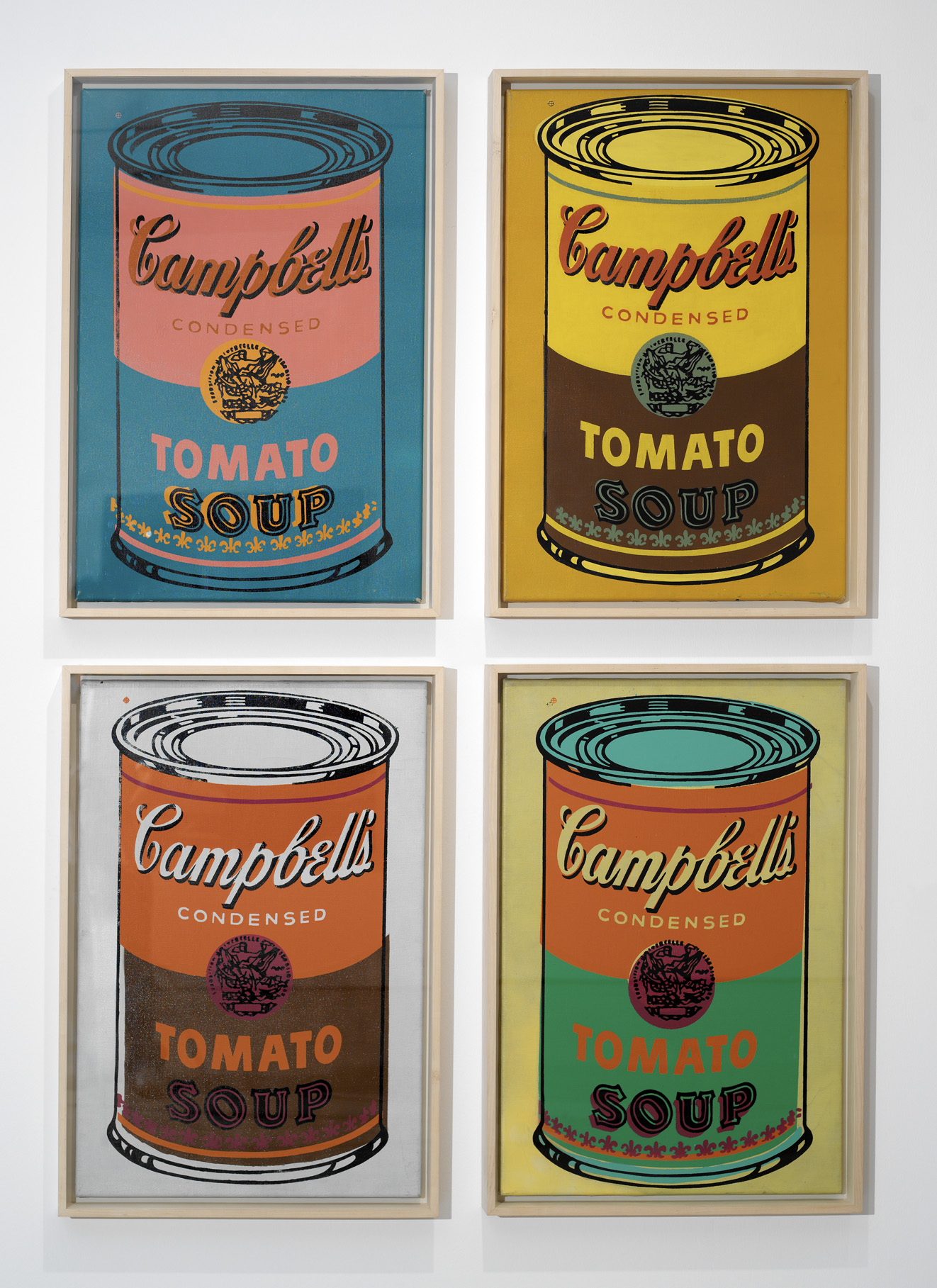Now you may ask,"Just how can she tie the surface area of a cylinder to Art History?" Of course, that would be strange that you would have actually asked that, unprompted, but since I told you to, I bet you are wondering...
Andy Warhol is just the crazy, modern artist type that can help me out. Not that he was really into formulas to determine surface area, he wasn't. He was more into the mod scene and icons as muse. He used many very familiar objects as the subject of his art and really who else could come close to Marilyn Monroe but the Campbell's Soup Can. Not really the same appealing curves but for mathematicians, the surface area is what really gets them going.
So the question remains...how do we find the surface area of a cylinder and learn about Andy Warhol in the process...lets ask Andy himself.
Thanks so much, Andy! I'd shake your hand but I know that you absolutely hated to be touched. (See, I told you that you'd learn something about him!)
Okay- I'm going to go and grab an actual can of soup and give you the measurements and then we'll discover the surface area together!! Okay, I have in my hands, well that's not exactly true since I'm using my hands to type. I have next to me on my desk...a can of Campbell's Tomato Bisque Soup (how fancy!) and it measures 4 inches tall (h) and the diameter is 2 and 1 half inches or 2.5 which means that the radius would be half that or 1.25 (r). We will use 3.14 as Pi and proceed according to Andy's instructions...
SA= 2(3.14)(1.25sq.) + 2(3.14)(1.25)(4)
which equals...41.21 square inches
Which then means that you can find the total amount of tin represented by Warhol's 32 soup cans from 1962
Since one can equals 41.21 sq. inches then 32 cans would be 1318.72 sq. inches. If you'd like to learn more about the soup cans you can check them out here at the MOMA. One of the basic tenets of Andy's pop art ideal was that he took mass produced images and had us look at them in a different way. He repeated images and that can be mathematical, after all, he had to know that 32 would end up in an 8x4 square instead of creating 41 cans which would have been hard to square.




No comments:
Post a Comment